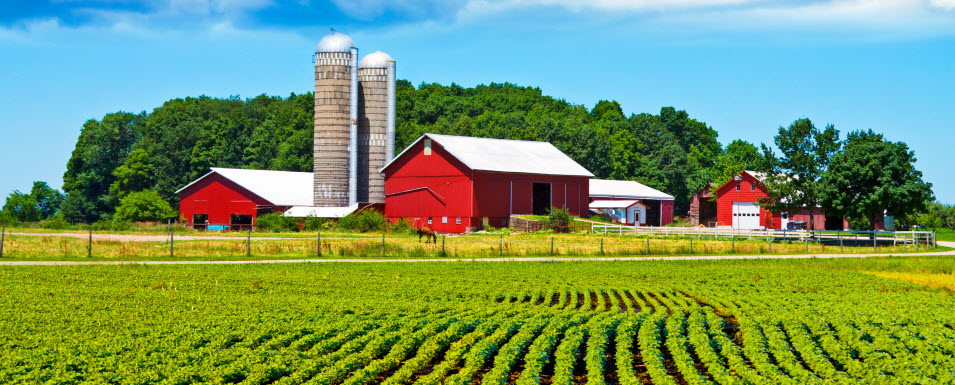Farming has often been viewed as the backbone of the American economy. While technology and other recent developments may have changed this thinking, farmers still enjoy a preferred status, at least as federal income taxes are concerned. For instance, there are several special tax code provisions relating to farming, most of them beneficial. At the same time, taxpayers in the agriculture field may be in line for the same tax breaks available to businesses in general.
What sort of tax provisions are we talking about? Periodically, the IRS provides insights through online postings. Here are ten items that may be of interest.
1. Depreciation deductions: Like other businesses, farmers can take advantage of enhanced writeoffs for property placed in service in 2017. Specifically, a farmer may claim a maximum expensing deduction of $510,000 under Section 179, subject to a phase-out for acquisitions above $2,030,000, plus 50% “bonus” depreciation on qualified property.
2. Crop insurance proceeds: Crop insurance may be purchased by farmers to protect against losses caused by natural disasters –such as hail, drought and floods — or lost revenue due to declines in prices of agricultural commodities. However, the proceeds generally have to be reported as income in the year they are received.
3. Sales due to weather: On a related note, if a farmer sells more livestock and poultry than would normally occur in a year because of weather-related conditions, the business gets a reprieve: It can postpone reporting the gain from sales of the additional animals due to the weather until the next year.
4. Farm income averaging: Regular income averaging has gone by the boards, but farmers may still average all or some of the current year’s farm income by allocating it to the three prior years. This may lower tax for the current year tax if current income from farming is high and taxable income from one or more of the three prior years was low.
5. Deductible farm expenses: As with other businesses, farmers may write off ordinary and necessary costs of operating a farm for profit. An “ordinary” expense is one that is common and accepted in the farming business, while a “necessary” expense must be appropriate for the business.
6. Employees and hired help: Similarly, a farmer can deduct reasonable wages paid for labor hired to perform farming operations. This includes both full-time and part-time workers. Of course, the business is responsible for withholding income and payroll taxes for its employees.
- Items purchased for resale: Not all farm products are home-grown. Farmers may to deduct the cost of items purchased for resale in the year the sale occurs. This includes livestock and freight charges for transporting the livestock to the farm.
8. Net operating losses: If the deductions claimed by a farming operation exceed its profits, it may report a net operating loss (NOL) for the year. The NOL can be carried back for two years and then forward for up to 20 years to offset income in other years. As a result, the farm business may be entitled to a refund from a prior year or benefit from a tax reduction in a future year.
9. Loan repayments: When a taxpayer takes out a personal loan, he or she can’t deduct interest on the subsequent loan repayments. However, if loan proceeds are used in a farming business, the taxpayer may deduct the interest paid on the loan on the farm’s tax return.
10: Fuel and road use: Finally, farmers may be able to claim a credit or refund of federal excise taxes on fuel used on a farm for farming purposes. Other taxpayers often illegally claim this off-road credit, but it’s legitimate for those in the farming industry.
Do you want to know more about the special rules for farming activities? You can find valuable information in IRS Publication 225, Farmer’s Tax Guide, at https://www.irs.gov/pub/irs-pdf/p225.pdf.
Thanks for reading CPA Practice Advisor!
Subscribe Already registered? Log In
Need more information? Read the FAQs
Tags: Benefits, Technology





